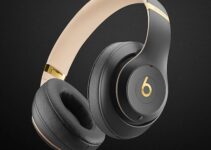Razer is a well-known manufacturer of PC accessories. One of the products that make them stand out from the multitude of accessory makers is their headsets; they make high-end headsets with qualities that allow them to pass for heavy-duty gaming accessories.
While most of their headset releases like the Razer Kaira Pro, Razer Opus, Razer Barracuda Pro, Kraken V3 Pro, and their current flagship, the Razer BlackShark V2 Pro are highly recommended by product reviewers and gamers who use them.
However, as common with all amazing products out there, some shortcomings are always present. In the case of Razer headsets, it’s the consistent report by some users claiming to be hearing a muffling sound while it’s in use.

In this article, we’ll be going through some troubleshooting guides on how to fix the muffled sounds you get from your Razer headset. Before we get into the brass tacks of this article, let’s first outline some possible causes of this issue.
Razer Headset Sounds Muffled: Possible Causes
Multiple issues could cause a Razer headset to start producing muffled sounds. The good thing is that most of these can easily be fixed, and guides on how to go about fixing them are very easy to follow.
-
Damaged Wires
This issue is common among people using the Razer headset with its 3.5mm headphone cord. Over time, especially with poor maintenance, the wire can easily become damaged from excess tension.
In most cases, you’ll get a muffled sound, but it becomes clearer when the cord is slightly tilted. Right away, you’ll want to get a replacement to keep getting the best of your headset or resort to using the Bluetooth feature only.
-
Blown Speakers
It’s so often the case with sound devices that are subjected to extremely loud audio for a repeated period. Aside from the obvious issue which is damaging your ears, there’s the risk of bursting the speakers. To confirm if this is the case, you’d, first of all, need to confirm that your issue isn’t coming from the damaged audio wire.
If it’s the cause, you may need to consult customer support if your warranty covers this, or if getting a new device is your only option. The bad news is that this isn’t fixable, or at least fixing will more or less mean taking ear cups from another working headset.
-
Physical Damage
This can either be from a damaged casing, moisture damage, or a break of any of the sound components. Even though Razer is praised for making durable products, there’s a limit to these products’ strengths which you’d not want to exceed during handling.
More so, most models aren’t waterproof, as such, they can easily get damaged by exposure to moisture. You’ll want to consult customer support to know if your warranty covers damages from moisture or breakage of the casing.
-
Incorrect Razer Synapse Settings
The Razer Synapse 3 is a software that allows you to customize the settings of your headset, such as the sound profile, the microphone settings, and the lighting effects.
In most cases, if all the causes above don’t apply to what’s wrong with your headset, then it’s likely to be because of your incorrect equalizer setting. Simply navigate the program to your Sound settings either make a few changes to the sound profile or reset entirely.
-
Accumulate Dirt in Ear Cups
Yes, your device is a headset, as such dirt from the ear wax is likely not to occur. However, you can’t completely rule out the accumulation of dust especially if you’ve been keeping it in an unhygienic environment.
-
Problem with Audio Source
When everything seems to check out, the last possible cause of the muffling sound problem is your audio source. It is most likely that you’re playing an audio file with very low quality in the first place. The audio source issue can also result from using the Bluetooth connection while you’re quite far away from the playing device.
Razer Headset Sounds Muffled: How to Fix
Raze headsets are very portable devices, they use internal rechargeable batteries and are sealed, so simply taking them apart to fix them is not an advised option. That being said, there are several troubleshooting procedures you can execute that don’t require you to take apart the device.
-
Check your PC and Audio Ports
Before considering complex solutions, trying this out may be all you need to get things resolved. Many times, the issue can be related to dirt preventing the smooth insertion of your headphone cable.
You want to examine the headphone jack/ports to make sure that there’s no obstruction and that they’re clean. If any, pick off with a pin and blow out loose residue.
-
Replace Audio Cable
If the issue is with the cable; you can verify this by slightly tilting the cable to see if there’s an improvement in the sound. You’ll want to get a complete replacement or start using the Bluetooth alternative to connect with other devices.
-
Reset the Razer Synapse Settings
Your last resort, if you can’t seem to find a problem with your device, is to perform a reset on the control software. In most cases, this is all you need to solve your problem especially if the headset is used to play without muffled sound. Here are the steps to resetting the Razer Synapse software.
- Open Razer Synapse.
- Click on the Settings icon in the top-right corner of the window.
- Click on the Advanced tab.
- Scroll down to the Reset Settings section.
- Click on the Reset Settings button.
- Click on the Yes button to confirm.
Users often claim that complete installation can solve the issue, however, we recommend you reset first before uninstalling as you’re not sure if the settings are saved in the headset when they’re executed.









